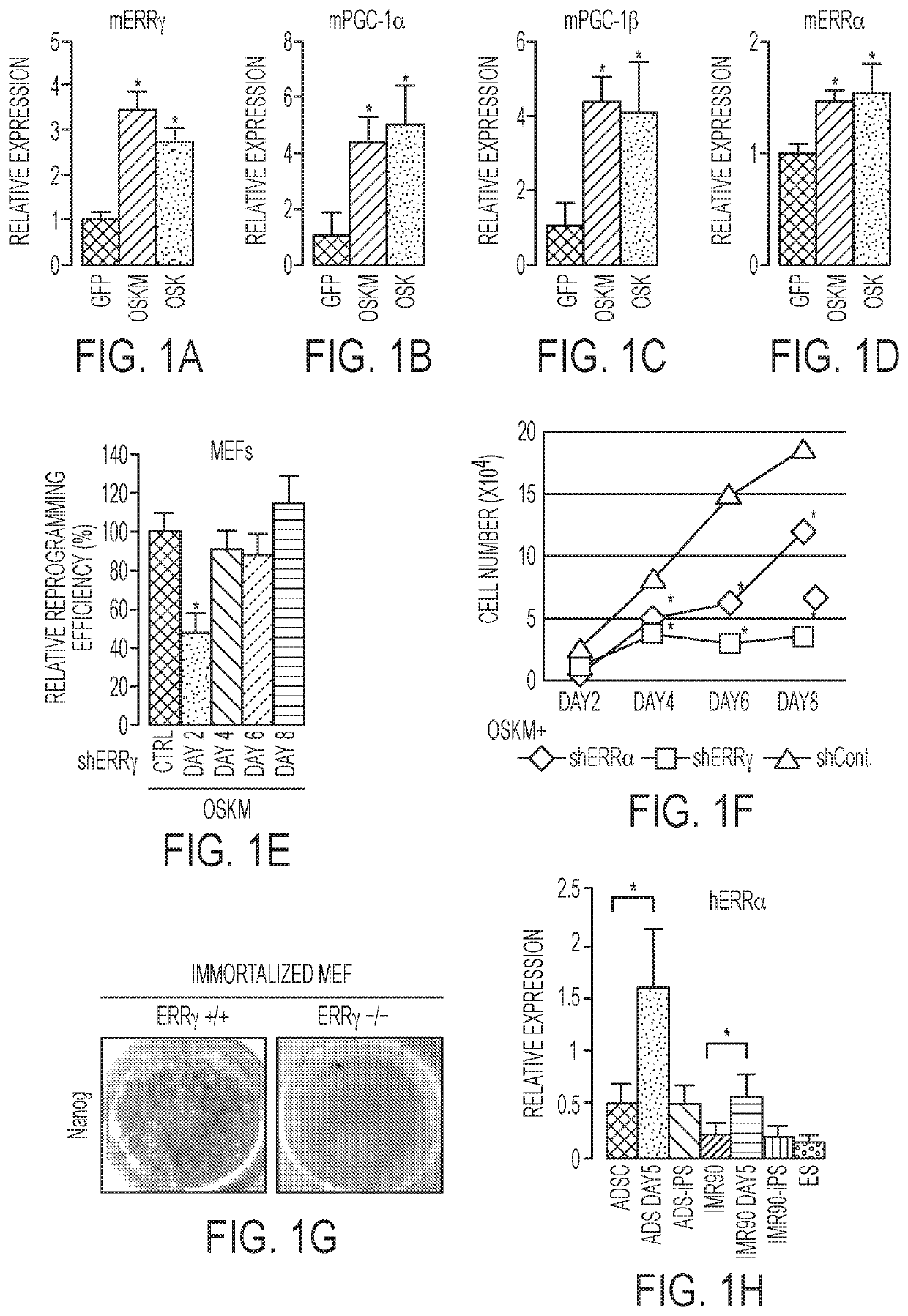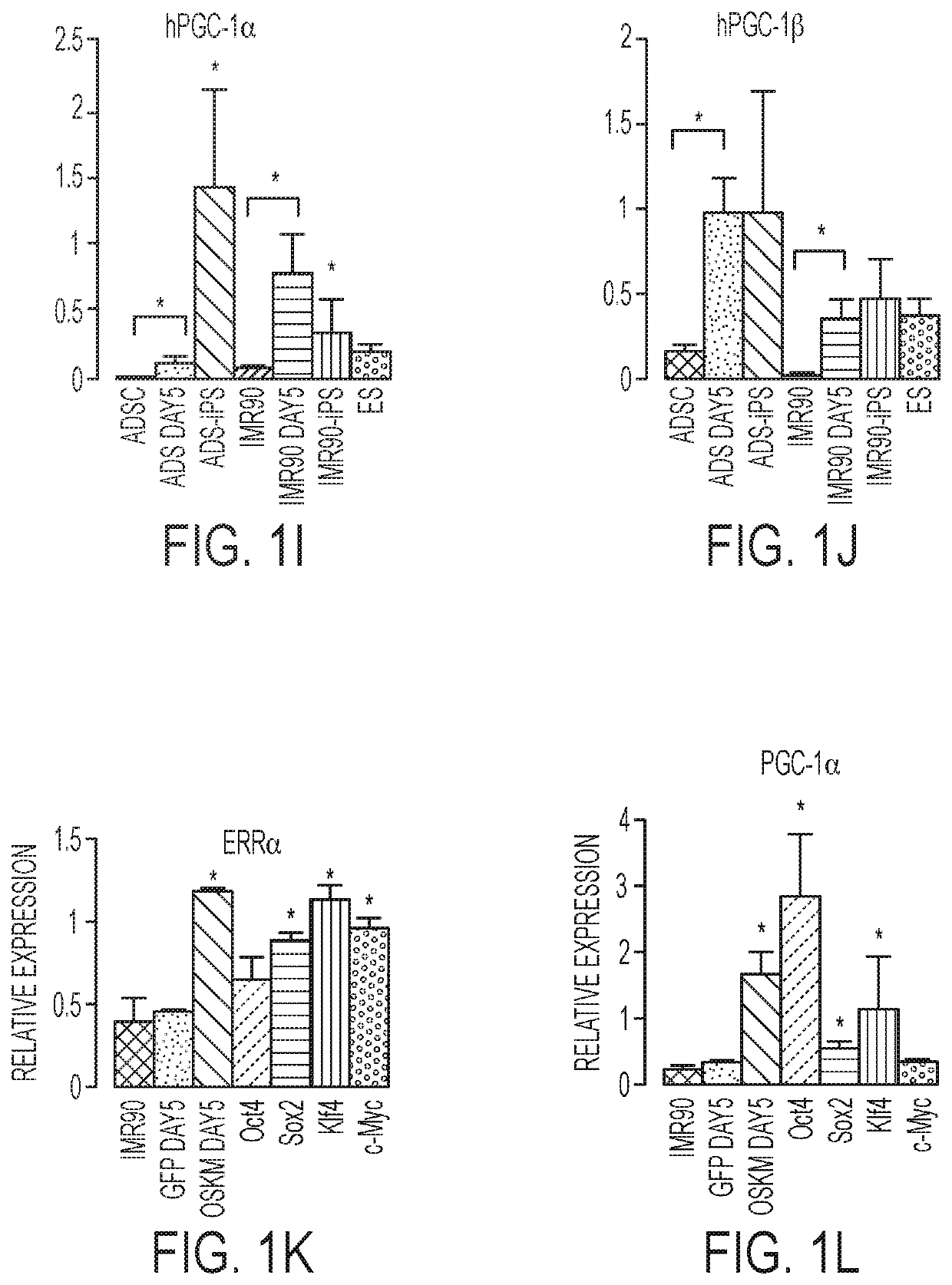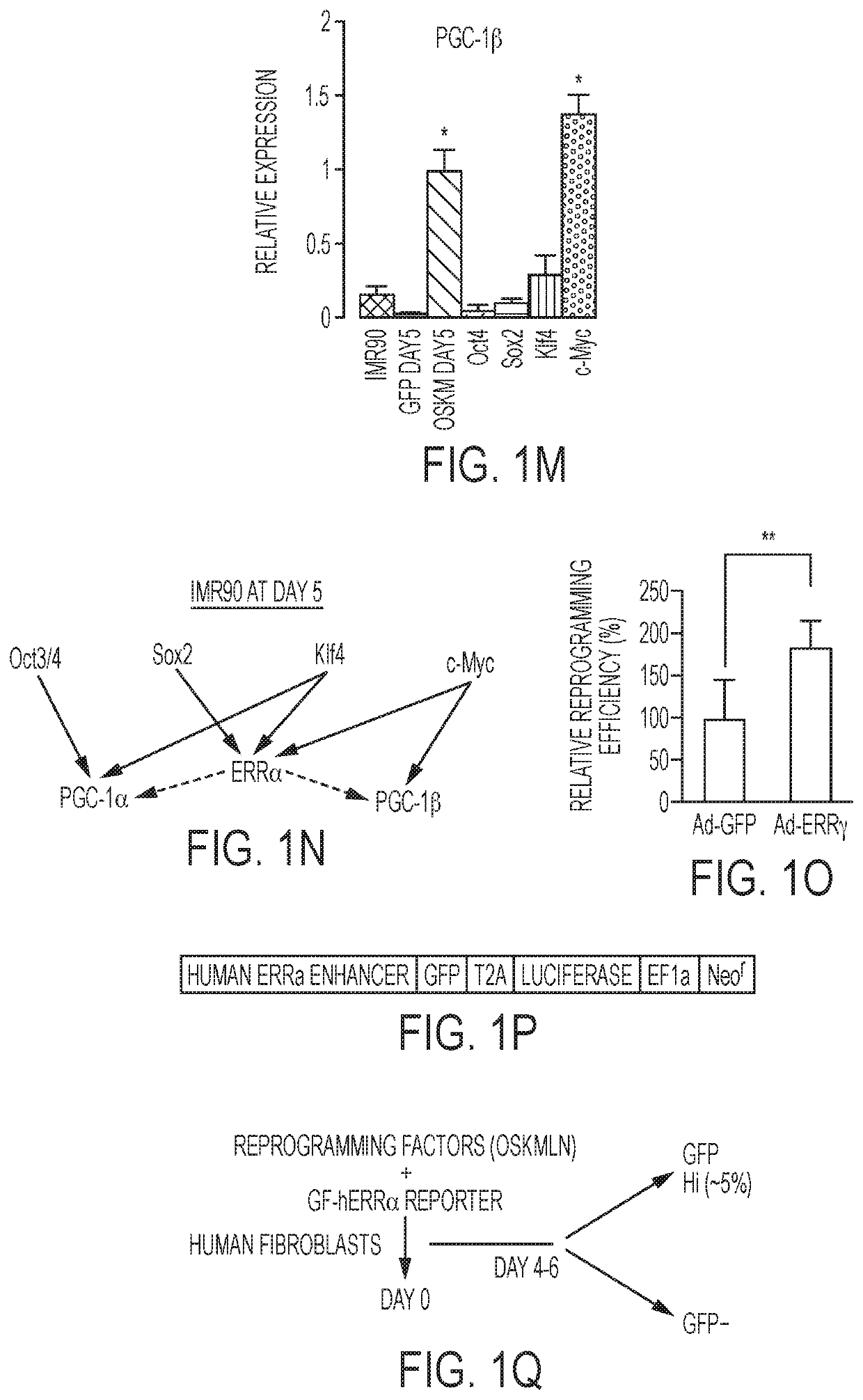Reprogramming progenitor compositions and methods of use therefore
a technology of applied in the field of reprogramming progenitor composition and composition therefore, can solve the problems of lack of reliable source of pluripotent stem cells and the death of thousands of patients, and achieve the effect of high efficiency
- Summary
- Abstract
- Description
- Claims
- Application Information
AI Technical Summary
Problems solved by technology
Method used
Image
Examples
example 1
e Important for Somatic Cell Reprogramming
[0197]Temporal gene expression studies in mouse embryonic fibroblasts (MEFs) after reprogramming with Oct4, Sox2, Klf4 and cMyc (OSKM) or OSK revealed transient increases in the expression of ERRγ, PGC-1α, PGC-1β, and to a lesser extent, ERRα, 3 days after infection (FIGS. 1A-1D). Furthermore, depletion of ERRγ, PGC-1α or PGC-1β by shRNA knockdown coincident with OSKM induction significantly reduced reprogramming efficiency in MEFs (FIG. 2A), whereas ERRγ depletion later in reprogramming had little effect (FIG. 1E). To further explore the timing of gene induction in early reprogramming, OSKM expression was induced in MEFs isolated from ERRγlox / lox and ERRγlox / lox CreERT mice via doxycycline-inducible lentiviruses (Wei et al., 2009, Stem cells (Dayton, Ohio) 27, 2969-2978). While tamoxifen-treated ERRγlox / lox MEFs (ERRγ control cells) exhibited multiple foci of reprogramming cells 5 days after doxycycline-induced OSKM expression, ERRγlox / lox ...
example 2
cted a Transient Hyper-Energetic State that Functions in Reprogramming
[0201]The increased expression of ERRs and their co-activators led to the question of whether acutely altered energy flux in the mitochondria may be fueling reprogramming. Mouse embryonic fibroblasts (MEFs) from the reprogramming factor doxycycline-inducible mouse (Carey et al., 2010, Nature methods 7, 56-59) reached an oxidative phosphorylation (OXPHOS) peak around days 2-4 after induction (FIG. 3A). Importantly, the maximal OXPHOS capacity was also significantly increased in early reprogramming MEFs (FIGS. 3B and 4A). A similar bioenergetics time course recorded on days 3 to 10 after OSKM infection in human IMR90 cells revealed a transient increase in mitochondrial OXPHOS that peaked 5 days after infection (2.5-5.0 fold increase in oxygen consumption rates (OCR)) accompanied by a sustained increase in glycolysis (2.5-3.5 fold increase in the extra-cellular acidification rates (ECAR)) (FIGS. 4B and 4C). Correspon...
example 3
iPSC Progenitors were Enriched for ERRγ Expression
[0204]Under standard conditions, only a small percentage of cells are successfully reprogrammed into iPSCs. Given the observation of a metabolic switch in the heterogeneous cell populations present in the early stages of reprogramming, it was hypothesized that the sub-population of bona fide iPSC progenitors might be enriched for the ERR-mediated hyper-energetic burst. Analysis of cell surface markers differentially expressed during mouse embryonic fibroblasts (MEFs) reprogramming revealed that early clusters of reprogramming cells lacked the expression of stem cell antigen 1 (Sca1) and cluster of differentiation gene 34 (CD34) expression (FIGS. 5A and 5B). Upon OSKM induction, CD34 expression was promptly up-regulated, resulting in three distinct cell sub-populations in early reprogramming cells; Sca1−CD34− double negative (DN), Sca1+CD34+ double positive (DP), and Sca1+CD34− single positive (SP) (FIG. 6A). Correlating with immunofl...
PUM
 Login to View More
Login to View More Abstract
Description
Claims
Application Information
 Login to View More
Login to View More - R&D
- Intellectual Property
- Life Sciences
- Materials
- Tech Scout
- Unparalleled Data Quality
- Higher Quality Content
- 60% Fewer Hallucinations
Browse by: Latest US Patents, China's latest patents, Technical Efficacy Thesaurus, Application Domain, Technology Topic, Popular Technical Reports.
© 2025 PatSnap. All rights reserved.Legal|Privacy policy|Modern Slavery Act Transparency Statement|Sitemap|About US| Contact US: help@patsnap.com



